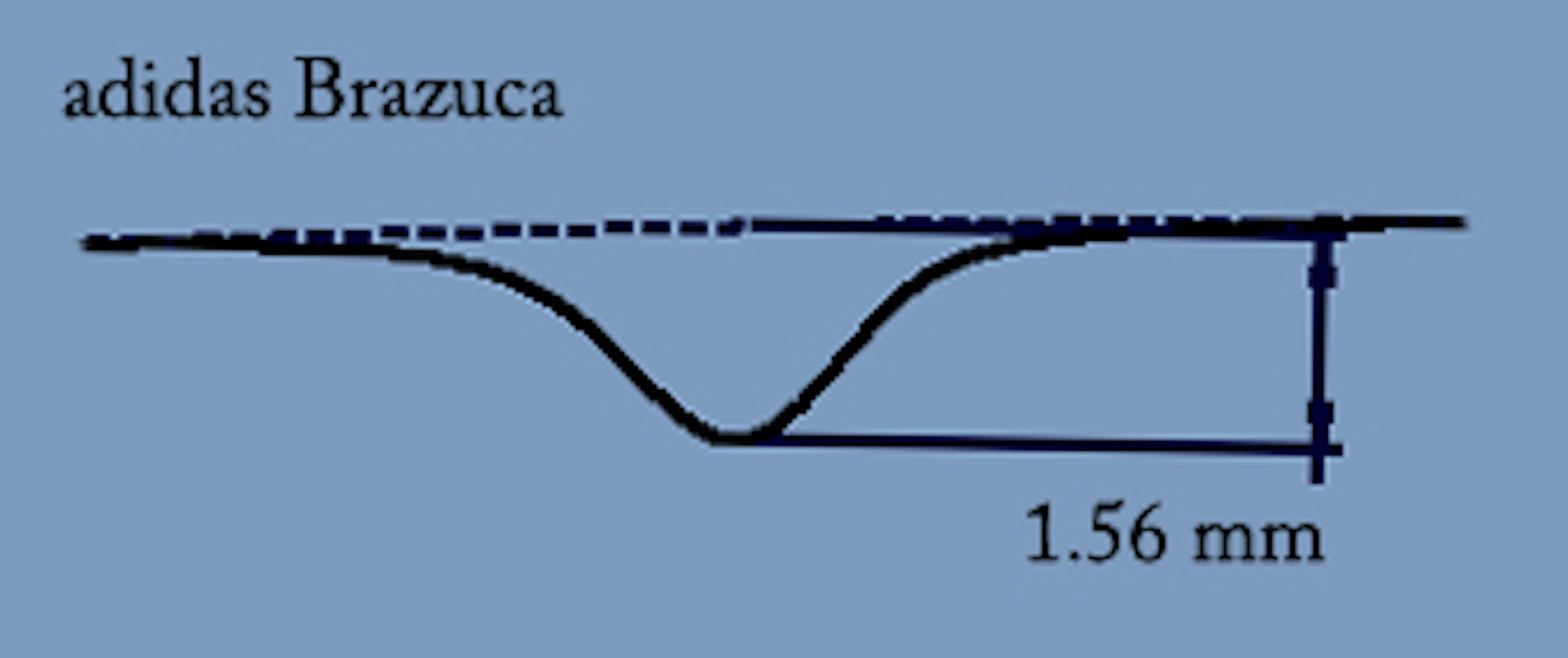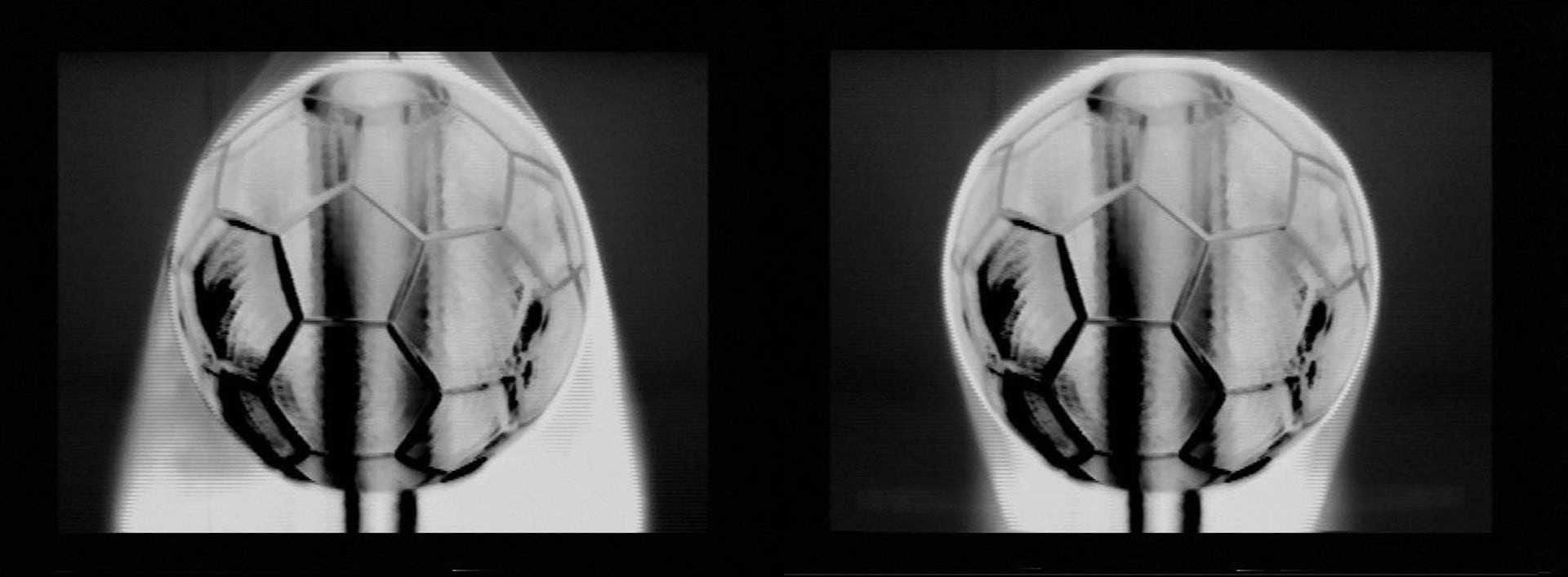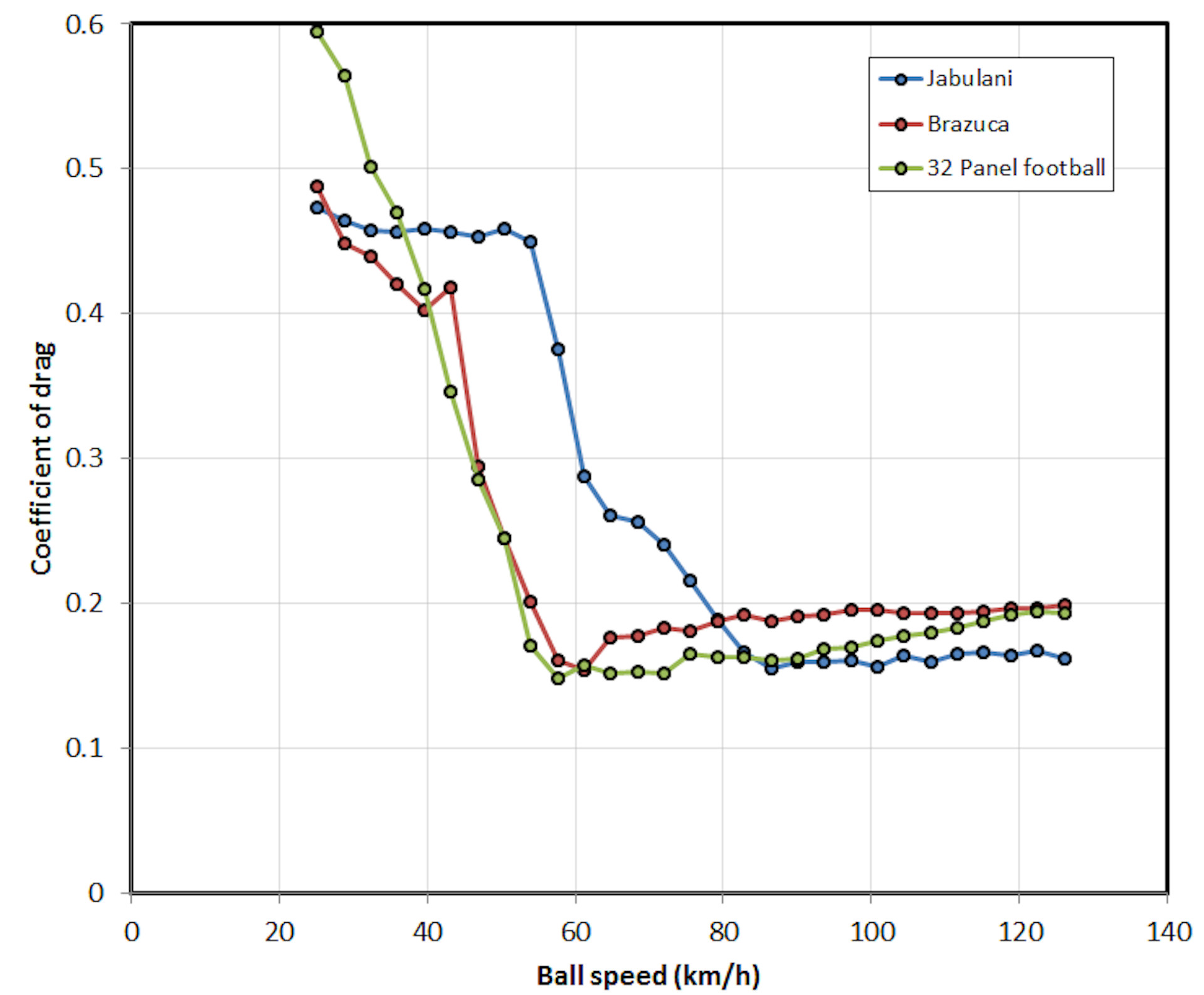An in-depth look at the 2014 World Cup Football Ball, the Adidas Brazuca, its design, and how it overcame the controversies of its predecessors, optimized for American audiences. Discover how this ball’s unique features impacted the game.
1. Introduction to the 2014 World Cup Football Ball
The 2014 FIFA World Cup in Brazil was not only a showcase of football talent but also a stage for technological advancements in sports equipment. Among these, the official match ball, the Adidas Brazuca, stood out. This ball aimed to overcome the criticisms leveled against its predecessors, the Teamgeist (2006) and the Jabulani (2010), which were often described as unpredictable. The Brazuca was designed to provide more stability and a truer flight path, enhancing the playing experience. The Brazuca featured a unique panel design and deeper seams to improve aerodynamics and performance compared to previous World Cup balls.
2. History of World Cup Footballs
Since 1970, Adidas has been the official provider of match balls for the FIFA World Cup, using each tournament as a platform to introduce new innovations.
2.1 Early Designs
The balls of the 1970s and 1980s were typically made of leather and featured a 32-panel design, consisting of 20 hexagonal and 12 pentagonal panels. These designs were hand-stitched and known for their durability and classic appearance.
2.2 The Teamgeist (2006)
The 2006 World Cup in Germany saw the introduction of the Teamgeist, a departure from the traditional 32-panel design. The Teamgeist featured only 14 thermally bonded panels, creating a smoother surface. However, this smoothness led to complaints from players about its unpredictable flight behavior.
2.3 The Jabulani (2010)
In 2010, the Jabulani was introduced for the World Cup in South Africa. It had only eight thermally bonded panels, making it even smoother than the Teamgeist. The Jabulani faced significant criticism for its erratic flight patterns, with many players and coaches comparing it to a beach ball.
3. Design and Construction of the Brazuca
The Adidas Brazuca was designed to address the issues raised by the Teamgeist and Jabulani. Its construction and design aimed to provide better stability, control, and a more predictable flight path.
3.1 Panel Design
The Brazuca featured six identical panels shaped like four-armed windmills, a significant departure from the larger, smoother panels of its predecessors. This design increased the length of the seams, which helped to disrupt airflow and reduce the “knuckleball” effect that plagued the Jabulani.
3.2 Thermal Bonding
Like the Teamgeist and Jabulani, the Brazuca used thermal bonding technology to create a seamless surface. This process involved heating the panels and fusing them together, resulting in a more consistent shape and improved performance in wet conditions.
3.3 Surface Texture
The Brazuca featured a textured surface designed to increase grip and control for players. This texture, combined with the deeper seams, helped to create more turbulence around the ball, reducing drag and stabilizing its flight.
3.4 Materials
The ball was constructed from a polyurethane (PU) material, which provided a soft touch and good durability. The bladder inside the ball was made of latex, ensuring good air retention and bounce characteristics.
4. Aerodynamic Properties of the Brazuca
The aerodynamic properties of a football significantly affect its flight and behavior. Understanding these properties is crucial to appreciating the design improvements of the Brazuca.
4.1 Drag Coefficient
The drag coefficient measures how much resistance an object experiences as it moves through the air. A lower drag coefficient means the ball will travel further and faster. The Brazuca was designed to have a drag coefficient similar to that of traditional 32-panel balls, ensuring a more predictable flight path.
4.2 Seam Depth and Length
The depth and length of the seams play a critical role in the aerodynamics of a football. Deeper seams create more turbulence, which helps the air to cling to the surface of the ball for longer, reducing the size of the wake behind it. The Brazuca’s deeper seams, measuring 1.56 mm, were a significant improvement over the Jabulani, which had shallower seams. According to research from Sheffield Hallam University, the Brazuca’s seam depth was 50% deeper than a traditional 32-panel ball and three times deeper than the Jabulani.
 Laser scan of Adidas Brazuca seam profile
Laser scan of Adidas Brazuca seam profile
The seam length of the Brazuca was also longer than that of the Jabulani, further enhancing its aerodynamic stability. A longer seam length helps to disrupt the airflow around the ball, preventing the formation of a smooth, laminar flow that can cause unpredictable movements.
4.3 Turbulence and Wake
As air flows over a smooth object, it tends to separate from the surface, creating a region of low pressure behind it known as the wake. This wake increases drag and slows the ball down. The seams of a football help to create turbulence in the airflow, which allows the air to stick to the surface for longer and reduces the size of the wake. The Brazuca’s design ensured that the airflow was turbulent, leading to a smaller wake and a more stable flight.
 Wake behind football at low and high air speed
Wake behind football at low and high air speed
5. Player and Coach Feedback on the Brazuca
Unlike its predecessors, the Brazuca received largely positive feedback from players and coaches. Its improved stability and predictable flight path were welcomed, making it a popular choice among professionals.
5.1 Improved Stability
Players noted that the Brazuca felt more stable in the air compared to the Jabulani. This stability allowed for more accurate passes, shots, and crosses, enhancing the overall quality of the game.
5.2 Predictable Flight Path
Coaches appreciated the Brazuca’s predictable flight path, which made it easier for players to judge distances and trajectories. This predictability reduced the number of unexpected swerves and dips, leading to fewer errors and more consistent play.
5.3 Enhanced Control
The textured surface of the Brazuca provided players with enhanced grip and control, especially in wet conditions. This improved control allowed for more precise ball handling and better dribbling.
6. Comparison with Previous World Cup Balls
To fully appreciate the improvements of the Brazuca, it’s helpful to compare it with the Teamgeist and Jabulani.
6.1 Panel Count
The Brazuca had six panels, compared to 14 for the Teamgeist and eight for the Jabulani. The lower panel count of the Brazuca contributed to its improved aerodynamics and stability.
6.2 Seam Depth
The seam depth of the Brazuca was significantly greater than that of the Teamgeist and Jabulani. This deeper seam depth helped to create more turbulence and reduce drag, resulting in a more predictable flight path.
6.3 Player Feedback
The Teamgeist and Jabulani received widespread criticism from players and coaches, who complained about their unpredictable flight behavior. In contrast, the Brazuca received largely positive feedback, with players praising its stability and control.
6.4 Aerodynamic Performance
Wind tunnel tests have shown that the Brazuca’s aerodynamic performance is similar to that of traditional 32-panel balls. This similarity ensures that the ball behaves in a predictable manner, reducing the likelihood of unexpected swerves and dips.
 Aerodynamic data for Adidas Brazuca, Jabulani, and 32-panel football
Aerodynamic data for Adidas Brazuca, Jabulani, and 32-panel football
7. The Science Behind Football Aerodynamics
Understanding the science behind football aerodynamics is essential for appreciating the design of the Brazuca.
7.1 Laminar vs. Turbulent Flow
When air flows smoothly over an object, it is called laminar flow. Laminar flow separates easily from the surface, creating a large wake and high drag. When air flows chaotically over an object, it is called turbulent flow. Turbulent flow clings to the surface for longer, reducing the size of the wake and lowering drag.
7.2 The Magnus Effect
The Magnus effect is a phenomenon where a spinning object experiences a force perpendicular to both its direction of motion and its axis of rotation. This effect is what causes a football to curve when it is kicked with spin.
7.3 Knuckleball Effect
The knuckleball effect occurs when a ball with very little spin experiences unpredictable movements in the air. This effect is caused by alternating regions of laminar and turbulent flow on the surface of the ball. The Brazuca was designed to minimize the knuckleball effect by creating more consistent turbulence around the ball.
8. Significance of the Brazuca in Football History
The Adidas Brazuca holds a significant place in football history as a ball that successfully addressed the criticisms of its predecessors.
8.1 Overcoming Controversy
The Brazuca overcame the controversy surrounding the Teamgeist and Jabulani, proving that it is possible to design a football that performs well and is well-received by players and coaches.
8.2 Setting a New Standard
The Brazuca set a new standard for football design, incorporating advanced materials, innovative panel designs, and a focus on aerodynamic stability.
8.3 Impact on the Game
The Brazuca’s improved stability and predictable flight path enhanced the quality of the game, allowing players to showcase their skills with greater precision and control.
9. Expert Opinions and Analysis
Expert opinions from sports scientists, engineers, and football analysts further highlight the unique qualities of the Brazuca.
9.1 John Hart, Centre for Sports Engineering Research, Sheffield Hallam University
John Hart’s laser scans of the Brazuca’s seams revealed their increased depth compared to previous balls, confirming the design improvements aimed at enhancing aerodynamic stability.
9.2 Takeshi Asai, University of Tsukuba, Japan
Takeshi Asai’s wind tunnel tests demonstrated that the Brazuca’s aerodynamic performance was similar to that of traditional 32-panel balls, validating its design for predictable flight.
9.3 Football Analysts
Football analysts noted the positive impact of the Brazuca on the game, with players demonstrating greater accuracy and control in their passes, shots, and crosses.
10. The Legacy of the Brazuca
The legacy of the Brazuca extends beyond the 2014 World Cup, influencing subsequent football designs and setting a new standard for performance and playability.
10.1 Influence on Future Designs
The Brazuca’s design principles, such as the use of deeper seams and textured surfaces, have been incorporated into later football models, reflecting its impact on the evolution of ball technology.
10.2 Enduring Popularity
The Brazuca remains a popular choice among football enthusiasts, valued for its stability, predictability, and overall performance.
10.3 A Symbol of Innovation
The Brazuca stands as a symbol of innovation in sports technology, demonstrating how advanced design and materials can enhance the playing experience and improve the quality of the game.
11. FAQ About the 2014 World Cup Football Ball
Q1: What was the official name of the 2014 World Cup football?
A1: The official name of the 2014 World Cup football was Adidas Brazuca.
Q2: What was unique about the Brazuca’s design?
A2: The Brazuca featured six identical panels shaped like four-armed windmills, deeper seams, and a textured surface.
Q3: How did the Brazuca address criticisms of previous World Cup balls?
A3: The Brazuca’s design focused on enhancing aerodynamic stability and creating a more predictable flight path, addressing the issues raised by the Teamgeist and Jabulani.
Q4: What materials were used to make the Brazuca?
A4: The Brazuca was made from a polyurethane (PU) material and had a latex bladder.
Q5: How did players and coaches react to the Brazuca?
A5: The Brazuca received largely positive feedback from players and coaches, who praised its stability, control, and predictable flight path.
Q6: What is the significance of seam depth in football design?
A6: Deeper seams create more turbulence, which helps the air to cling to the surface of the ball for longer, reducing drag and stabilizing its flight.
Q7: How did the Brazuca compare to the Teamgeist and Jabulani?
A7: The Brazuca had fewer panels, deeper seams, and received more positive feedback compared to the Teamgeist and Jabulani.
Q8: What is the Magnus effect?
A8: The Magnus effect is a phenomenon where a spinning object experiences a force perpendicular to both its direction of motion and its axis of rotation.
Q9: What is the knuckleball effect?
A9: The knuckleball effect occurs when a ball with very little spin experiences unpredictable movements in the air.
Q10: What is the legacy of the Brazuca?
A10: The Brazuca influenced subsequent football designs, set a new standard for performance, and remains a symbol of innovation in sports technology.
12. Conclusion
The Adidas Brazuca was more than just a football; it was a triumph of design and engineering. By addressing the shortcomings of its predecessors and incorporating innovative features, the Brazuca provided players with a ball that was stable, predictable, and enjoyable to play with. Its legacy continues to influence football design, setting a new standard for performance and playability. The Brazuca remains a symbol of innovation in sports technology, demonstrating how advanced design and materials can enhance the playing experience and improve the quality of the game.
Do you have more questions about the history of footballs or the science behind sports equipment? At CAUHOI2025.UK.COM, we provide clear, concise, and thoroughly researched answers to all your questions. Visit our website today to explore more topics or contact us for personalized advice.
Contact us:
Address: Equitable Life Building, 120 Broadway, New York, NY 10004, USA
Phone: +1 (800) 555-0199
Website: CauHoi2025.UK.COM
